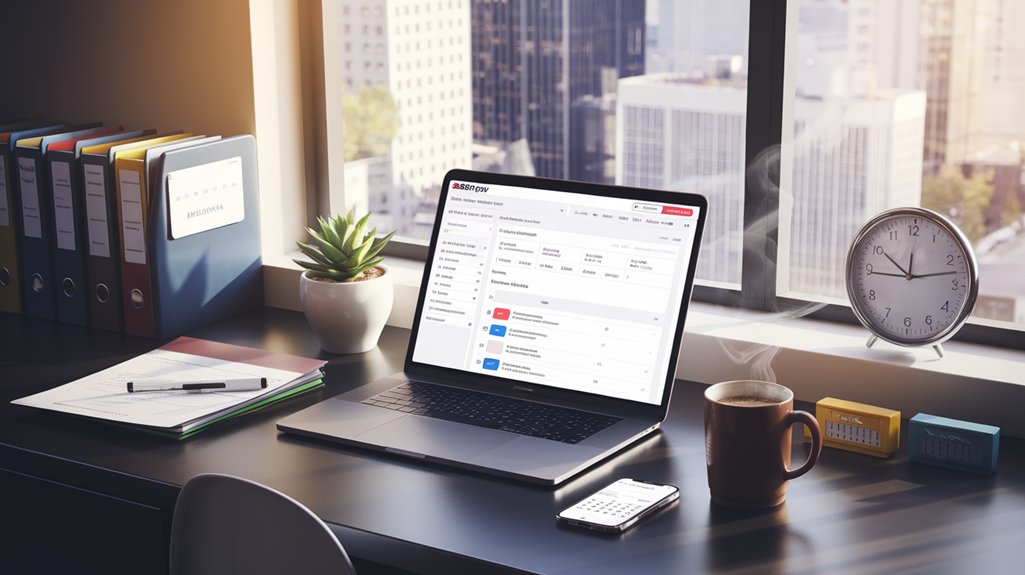Maintaining current UEI and CAGE code information in SAM.gov requires renewal every 365 days to guarantee eligibility for federal contracts. Businesses should set calendar reminders three months before expiration, maintain identical legal addresses across all systems, archive confirmation documents, and implement systematic monitoring processes. Minor address discrepancies can cause validation errors that delay registration. Proper documentation management supports audit readiness and prevents potential contract disputes. The following best practices will help streamline your compliance efforts.
Table of Contents
ToggleThe Critical Role of UEI and CAGE Codes in Federal Contracting

Every federal contractor must understand the fundamental importance of Unique Entity Identifiers (UEIs) and Commercial and Government Entity (CAGE) codes in the government procurement process.
These alphanumeric identifiers serve as the backbone of federal contracting systems, enabling proper impact assessment and facilitating entity tracking across government databases.
The UEI, a 12-character code that replaced DUNS numbers in 2022, applies universally across federal contracts. The registration process for obtaining a UEI is completely free and integrated into the SAM.gov platform.
In April 2022, the 12-character UEI system superseded DUNS numbers, becoming the standard identifier for all federal procurement activities.
Meanwhile, CAGE codes focus primarily on Department of Defense relationships but extend to broader government procurements. Both identifiers are mandatory for SAM registration.
Contractors often face compliance challenges when managing these codes, particularly during organizational changes. The UEI plays a crucial role in data verification and ensures compliance throughout the federal procurement process. Registration in System for Award Management is an essential requirement for all entities seeking to do business with the federal government.
Maintaining current information guarantees uninterrupted eligibility for bidding on contracts, receiving payments, and meeting federal regulatory requirements across all government transactions.
Essential Steps for Maintaining an Active SAM Registration

Maintaining an active SAM registration requires vigilance and regular attention from federal contractors to guarantee continuous eligibility for government opportunities. The system mandates renewal every 365 days, with the option to update entity information at any time during this period.
Contractors must carefully monitor their renewal dates, as registration lapses can render them ineligible for contract awards according to recent court rulings. Documentation requirements play an essential role in the entity validation process, which may require original documents or additional verification materials depending on the complexity of the entity’s structure. Recent case law has established that continuous registration is required from the submission of a final proposal through contract performance until final payment.
During scheduled maintenance periods—occurring every Tuesday, Thursday, and Friday from 8:00 PM to 10:00 PM ET—updates to registration information may be temporarily unavailable, necessitating advance planning for registration renewal activities. During the renewal process, federal contractors must review and update their Reps & Certs to ensure compliance with current government regulations.
Best Practices for Timely Updates and Compliance Management

Successful management of UEI and CAGE compliance hinges on establishing systematic processes for timely updates across federal procurement systems. Organizations should implement calendar reminders three months before expiration dates for both CAGE codes (5-year cycle) and SAM.gov registrations (annual cycle).
Address synchronization represents a critical compliance factor. Entities must maintain identical legal addresses in both CAGE/NCAGE systems and SAM.gov to prevent registration conflicts. Even minor discrepancies in address formatting can trigger validation errors and jeopardize federal funding eligibility. Any organization working with the federal government should ensure their address reflects where business is consistently conducted. Navigating the SAM renewal process involves several verification steps that must be completed precisely to maintain an active registration status. Active registrations in SAM.gov remain valid for 365 days from the submission date, requiring annual renewal to maintain compliance status.
Address alignment between CAGE/NCAGE systems and SAM.gov prevents validation errors that could threaten your federal contracting eligibility.
Documentation management provides the foundation for audit readiness. Organizations should archive all renewal confirmations, approval letters, and change logs in secure, federally compliant systems.
Downloading annual SAM.gov registration PDFs creates essential evidence of active compliance status for potential contract disputes.
Frequently Asked Questions
Can I Transfer My UEI to Another Business Entity?
No, the UEI transfer process is not permitted between business entities. Federal regulations require each separate business entity to obtain their own unique identifier through SAM.gov registration. UEIs remain permanently non-transferable.
What Happens if My CAGE Code Information Contains Errors?
CAGE code information errors have significant implications. Registration errors can cause SAM registration delays, prevent contract awards, lead to payment disruptions, and potentially render contractors ineligible for government opportunities until corrected by the Defense Logistics Agency.
How Do International Entities Obtain CAGE Code Equivalents?
International entities obtain CAGE code equivalents known as NCAGE codes by applying through their national codification bureaus or the NATO Support and Procurement Agency portal. This precedes SAM.gov registration for non-U.S. organizations.
Can Multiple Businesses Operate Under One UEI?
No, multiple businesses cannot operate under one UEI. Each legally distinct entity must maintain separate registrations in SAM.gov, even for business collaborations. UEIs are non-transferable and uniquely assigned per entity.
Will System Migrations or Updates Affect My Existing Registrations?
System updates typically require attention from registrants as they may impact existing registrations. Historical migrations have necessitated manual account changes, and system outages during updates can cause processing delays requiring proactive monitoring.